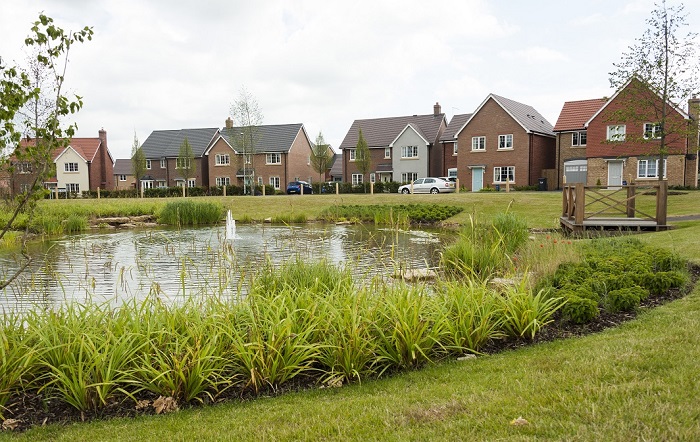Village definition
A village is a human settlement of a small size which is typically situated in a rural location. Broadly, a village tends to have a population of between 500 and 2,500, making it larger than a hamlet but smaller than a town. Historically, in the UK, villages tended to be classified as such when a church was built.
During the Industrial Revolution, people were drawn in greater numbers away from villages to towns and cities, or villages grew into towns themselves.
Traditionally, many villages developed as a form of community that was based around some form of amenity or trade, such as subsistence farming or fishing. In some cases, a village would be a form of ‘linear settlement’, i.e. one that was built in a line such as a along a railway line, road, river or coastline. Alternatively, they could be clustered around a central point, such as a church, market, or public space such as a ‘village green’. This is referred to as a ‘nucleated settlement’.
Planned villages are those which do not develop naturally around a central point or linear settlement but are instead created by urban planners.
In January 2017, the government announced the development of the 14 garden villages across England, with the potential to deliver more than 48,000 new homes. These may range in size from 1,500 to 10,000 homes, and will be distinct new places with their own community facilities, rather than extensions of existing urban areas. For more information, see Garden village.
The term ‘village’ can also be used to refer to particular neighbourhoods within a larger area, such as Greenwich Village in Manhattan, Chorlton Village in Greater Manchester, and the Olympic Village in London. These are often seen as being desirable areas and are sometimes part of a process of gentrification.
NB The GEN Glossary, published by the Global Ecovillage Network, [accessed 24/20/2022], defines a village as: ‘A clustered human settlement, larger than a hamlet but smaller than a town, with a population ranging from a few tens to a few thousand. Though often located in rural areas, the term urban village is also applied to urban neighborhoods.’
[edit] Related articles on Designing Buildings
Featured articles and news
Infrastructure that connect the physical and digital domains.
Harnessing robotics and AI in challenging environments
The key to nuclear decommissioning and fusion engineering.
BSRIA announces Lisa Ashworth as new CEO
Tasked with furthering BSRIA’s impressive growth ambitions.
Public buildings get half a million energy efficiency boost
£557 million to switch to cleaner heating and save on energy.
CIOB launches pre-election manifesto
Outlining potential future policies for the next government.
Grenfell Tower Inquiry announcement
Phase 2 hearings come to a close and the final report due in September.
Progress from Parts L, F and O: A whitepaper, one year on.
A replicated study to understand the opinion of practitioners.
ECA announces new president 2024
Electrical engineer and business leader Stuart Smith.
A distinct type of countryside that should be celebrated.
Should Part O be extended to existing buildings?
EAC brands heatwave adaptation a missed opportunity.
Definition of Statutory in workplace and facilities management
Established by IWFM, BESA, CIBSE and BSRIA.
Tackling the transition from traditional heating systems
59% lack the necessary information and confidence to switch.
The general election and the construction industry
As PM, Rishi Sunak announces July 4 date for an election.
Eco apprenticeships continue help grow green workforce
A year after being recognised at the King's coronation.
Permitted development rights for agricultural buildings
The changes coming into effect as of May 21, 2024.






















